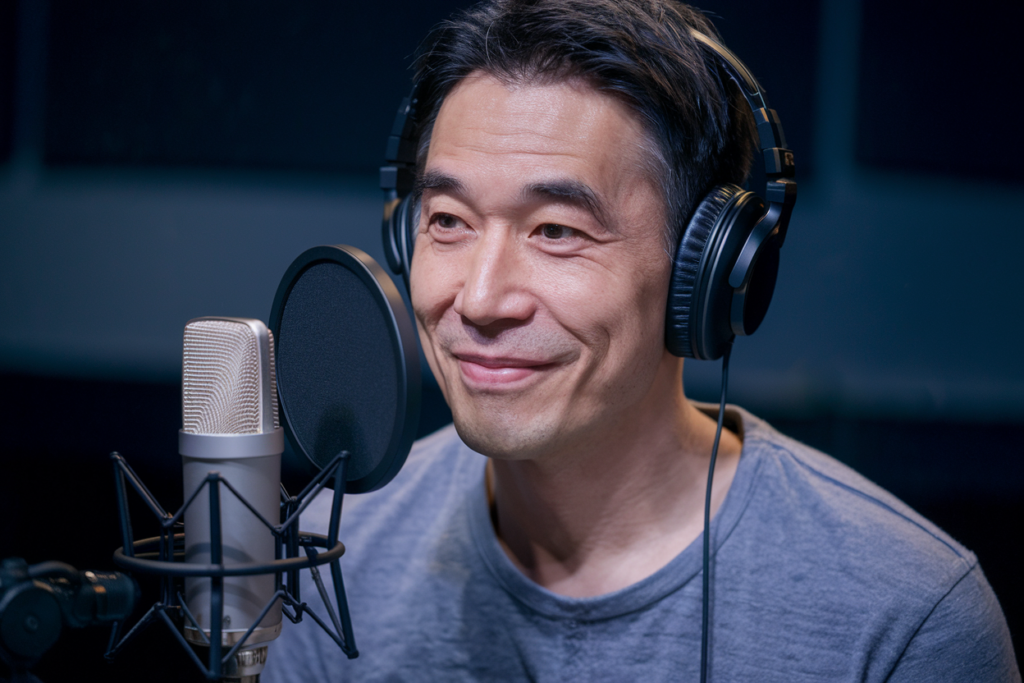Key Takeaways
- Distinct Characteristics: Osaka Japanese, or “Osaka-ben,” is known for its playful intonations, unique vocabulary, and casual style, reflecting the region’s cultural vibrancy.
- Historical Roots: The dialect evolved from the Kansai region’s language roots and was heavily influenced by merchants during Japan’s Edo period, shaping its rich colloquialisms and humor.
- Comparison with Other Dialects: Unlike the more formal Kanto dialect spoken in Tokyo, Osaka Japanese features a more relaxed tone. Variations exist within the Kansai area itself, showcasing distinct characteristics between cities like Osaka and Kyoto.
- Cultural Significance: Osaka Japanese plays a vital role in popular media and everyday communication, fostering community spirit while promoting regional pride through its unique expressions.
- Challenges for Outsiders: Misunderstandings may arise when encountering Osaka Japanese due to its vibrant expressions and colloquialisms. Awareness of these differences can enhance interaction among speakers from various regions.
- Navigating Language Barriers: Engaging with native speakers requires patience and clarification; immersing oneself in local culture can help improve understanding of this lively dialect over time.
Ever wondered why Osaka Japanese sounds so different from other regional dialects? If you’ve ever visited Japan, you might’ve noticed how the locals communicate with a unique flair that sets them apart. Osaka Japanese, known for its playful intonations and vibrant expressions, offers a fascinating glimpse into the cultural tapestry of the country.
Overview Of Osaka Japanese
Osaka Japanese stands out with its distinct intonations and vibrant expressions. This dialect captures the essence of local culture, showcasing a unique way of communication that resonates deeply with its speakers.
Historical Background
Osaka Japanese, or “Osaka-ben,” evolved from the historical Kansai region’s language roots. The influence of merchants during Japan’s Edo period shaped its development, promoting trade and interaction among diverse groups. As a center for commerce and entertainment, Osaka cultivated a dialect rich in colloquialisms and humor. You’ll notice how this background contributes to the lively character of everyday conversations.
Unique Features
Osaka Japanese boasts several unique features that set it apart from standard Japanese.
- Intonation Patterns: You’ll find specific intonation patterns that offer emotional depth in conversations.
- Vocabulary: Distinct words and expressions are common, like “akan” (no good) or “bikkurishita” (surprised), reflecting local attitudes.
- Casual Style: The informal tone often creates an inviting atmosphere, making interactions feel friendlier.
- Use of Particles: Unique particles such as “ya” for affirmation replace standard forms used elsewhere.
These characteristics not only enhance communication but also reflect the cultural vibrancy inherent in Osaka life.
Comparison With Other Regional Dialects
Osaka Japanese stands out among Japan’s diverse dialects, yet it’s essential to explore how it compares with others. The differences in pronunciation, vocabulary, and expressions create a rich tapestry of communication throughout the country.
Kanto Dialect
Kanto dialect, primarily spoken in Tokyo and its surrounding areas, emphasizes a more formal tone. In contrast to Osaka’s casual style, Kanto speakers often use softer intonation and standard grammar. For instance, while Osaka Japanese might say “akan” for “no good,” Kanto speakers would lean towards “dame.” This distinction illustrates not just regional identity but also cultural nuances in everyday conversation.
Kansai Dialect
While Osaka Japanese is part of the broader Kansai dialect family, other variations exist within this region. For example, Kyoto has a distinct way of speaking that tends to be more refined and polite compared to the playful banter typical of Osaka. Differences in word choice are apparent; where someone from Osaka might joke around using light-hearted terms like “bikkurishita,” a speaker from Kyoto may opt for more formal alternatives. These variances showcase the richness within Kansai itself.
Other Notable Dialects
Japan boasts several other notable dialects worth mentioning. For instance, the Hokkaido dialect incorporates influences from Ainu culture and presents unique vocabulary rarely heard elsewhere. Additionally, the Hiroshima dialect features strong intonations that can sound quite different from both Kanto and Kansai styles. Each regional expression enriches Japan’s linguistic landscape by reflecting local history and culture.
Understanding these differences enhances appreciation for each area’s uniqueness while recognizing Osaka Japanese as a vibrant representation of its own cultural heritage.
Cultural Impact of Osaka Japanese
Osaka Japanese, known as “Osaka-ben,” plays a significant role in shaping the cultural landscape of Japan. This dialect reflects the region’s lively spirit and distinct identity, influencing various facets of life, from entertainment to social interactions.
In Popular Media
Osaka Japanese frequently appears in popular media, including television shows, movies, and stage performances. Comedians often utilize its unique humor and playful expressions to connect with audiences. Voice actors leverage this dialect to bring characters to life authentically, showcasing Osaka’s vibrant culture through dialogue that resonates with viewers. The use of Osaka-ben in media not only entertains but also promotes regional pride among locals.
In Everyday Communication
In everyday communication, Osaka Japanese fosters a sense of community and belonging. Its casual style encourages friendliness and openness in conversations among speakers. Unique vocabulary adds color to interactions; terms like “akan” (no good) convey emotions clearly while enhancing relatability. Moreover, the distinct intonation patterns create a warm atmosphere that invites engagement. As people navigate daily life in Osaka using their dialect, they contribute to preserving and celebrating their cultural heritage through every conversation shared.
Challenges and Misunderstandings
Misinterpretations often arise when people encounter Osaka Japanese. The vibrant expressions and colloquialisms can create confusion, especially for those unfamiliar with the dialect. Even native Japanese speakers from other regions might find phrases like “akan” or intonation patterns puzzling. This divergence in communication styles can lead to misunderstandings in both casual conversations and more formal settings.
Common Misinterpretations
Common misinterpretations stem from differences in vocabulary and tone. For instance, you might hear someone say “bikkurishita,” which translates to “I was surprised.” However, depending on context, it could also convey excitement or disappointment. Such nuances may escape non-native speakers or those accustomed to standard Japanese. Additionally, informal phrases may seem blunt or overly casual, leading others to perceive a lack of respect that isn’t intended.
Navigating Language Barriers
Navigating language barriers requires awareness and patience. When engaging with speakers of Osaka Japanese, consider asking for clarification if something seems unclear. It’s perfectly acceptable to admit you’re unfamiliar with certain expressions; doing so fosters understanding rather than frustration. Moreover, immersing yourself in local culture through media—like TV shows featuring voice actors utilizing Osaka-ben—can enhance your comprehension over time. Adapting your listening skills will aid interaction while appreciating the rich cultural fabric woven into everyday conversations in Osaka.
Conclusion
Experiencing Osaka Japanese offers a fascinating glimpse into Japan’s cultural diversity and linguistic richness. The unique characteristics of this dialect not only enhance communication but also reflect the playful spirit of the region.
By understanding its distinct vocabulary and intonation, you can appreciate how Osaka-ben strengthens community ties and fosters connections among speakers. Embracing these nuances makes your interactions more meaningful while navigating potential misunderstandings with patience and curiosity.
As you explore the vibrant world of Osaka Japanese, you’ll find that it embodies a lively heritage that’s worth celebrating. Dive into local media or engage with native speakers to fully immerse yourself in this charming dialect and its cultural significance.
Frequently Asked Questions
What is Osaka Japanese?
Osaka Japanese, or “Osaka-ben,” is a regional dialect from the Kansai region of Japan. It features unique intonations, vocabulary, and expressions that set it apart from other dialects, reflecting the cultural vibrancy of Osaka.
How did Osaka Japanese evolve?
Osaka Japanese evolved from historical language roots influenced by merchants during the Edo period. This rich history contributed to its colloquialisms and humor, aligning with Osaka’s identity as a center for commerce and entertainment.
What are some unique features of Osaka Japanese?
Unique features include specific intonation patterns that add emotional depth, distinctive vocabulary like “akan” (no good) and “bikkurishita” (surprised), and casual speech styles fostering friendly interactions. Unique particles like “ya” also enhance communication.
How does Osaka Japanese compare to Kanto dialect?
Unlike Kanto dialect spoken in Tokyo, which emphasizes formality and standard grammar, Osaka Japanese is more playful and informal. This difference reflects regional identities and communication styles across Japan.
Why is Osaka Japanese important culturally?
Osaka Japanese significantly shapes local identity by promoting a sense of community through its casual style. Its frequent use in media fosters regional pride while connecting audiences with humor and relatable expressions.
What challenges arise with understanding Osaka Japanese?
Misunderstandings can occur due to its vibrant expressions and colloquialisms. Phrases may have different meanings based on context, which can confuse even native speakers from other regions. Awareness and patience are key to navigating these barriers.
How can one better understand Osaka Japanese?
To enhance comprehension of Osaka Japanese, immerse yourself in local culture through media such as TV shows or music featuring the dialect. Seeking clarification when unsure also helps bridge communication gaps effectively.







